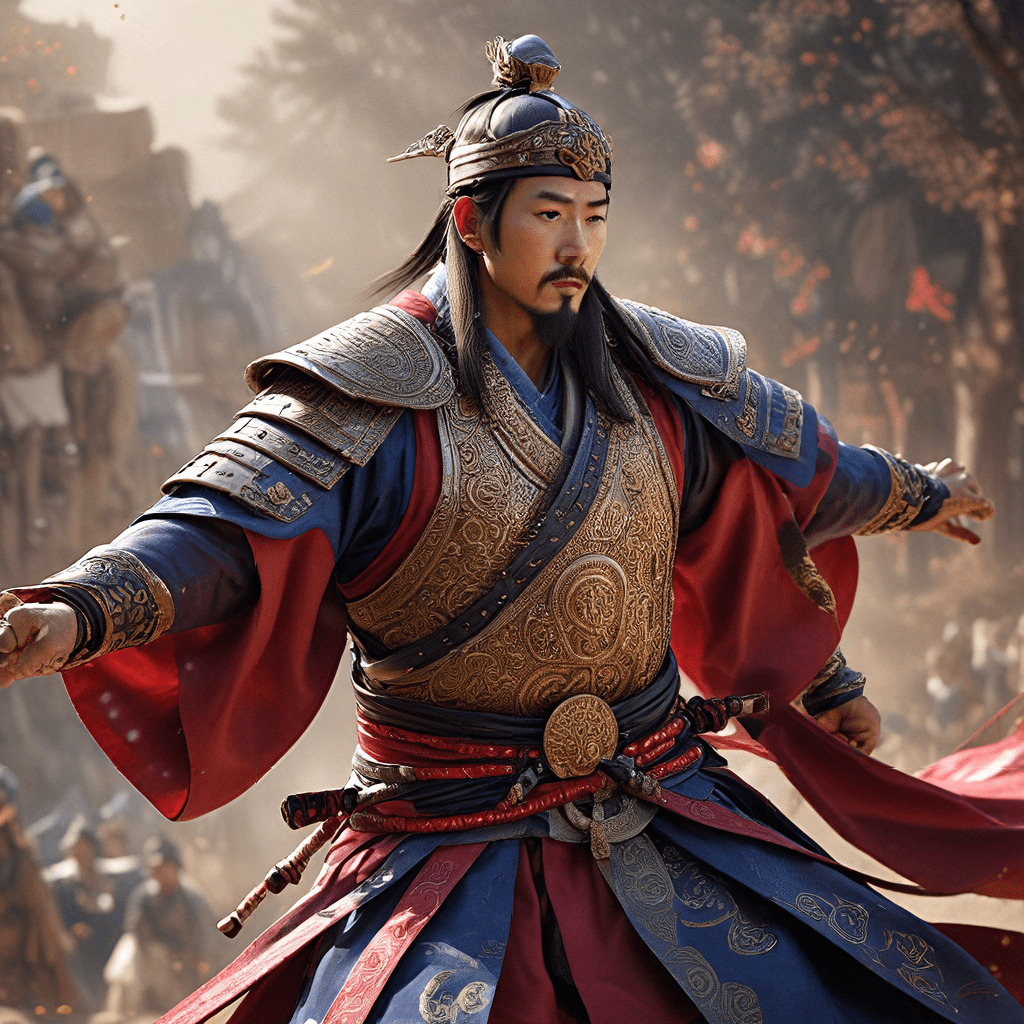The Tanuki and the Farmer: A Story of Cooperation and Friendship
I. Introduction
The tanuki, a creature often depicted in Japanese folklore, is known for its playful nature and transformative abilities. Celebrated both as a trickster and a symbol of prosperity, the tanuki represents the complex relationship between humans and nature. In this tale, we delve into the heartwarming story of a tanuki and a farmer, exploring their journey from initial misunderstanding to a deep bond of cooperation and friendship.
This article aims to highlight the central theme of unity through collaboration, showcasing how friendship can emerge from the most unexpected circumstances. Through the characters’ experiences, we will uncover valuable moral lessons that resonate within our contemporary society.
II. The Characters: Tanuki and Farmer
The tanuki is a fascinating figure in Japanese culture. Often depicted with a round belly, large eyes, and a wide grin, this creature possesses the ability to shapeshift, embodying the spirit of adaptability and cunning. Symbolically, the tanuki represents resourcefulness and transformation, reminding us of the importance of embracing change.
The farmer, on the other hand, is a hard-working individual deeply connected to the land. With a compassionate heart and a strong sense of duty, he dedicates his life to cultivating his crops and caring for his animals. His resilience in the face of adversity reflects the human spirit’s tenacity and determination.
Initially, the tanuki and the farmer view each other with suspicion and misunderstanding. The farmer sees the tanuki as a nuisance, while the tanuki perceives the farmer as a rigid and unyielding figure. Their contrasting perspectives set the stage for a transformative journey.
III. The Setting: A Rural Japanese Landscape
The story unfolds in a picturesque rural landscape of Japan, characterized by lush rice paddies, rolling hills, and vibrant wildflowers. The farmer’s land is a patchwork of fields, each blooming with the fruits of his labor. This serene environment is not just a backdrop; it plays a crucial role in shaping the characters’ experiences and actions.
Nature’s significance is evident throughout the tale, as it influences the farmer’s work ethic and the tanuki’s playful antics. The harmonious blend of human effort and natural beauty underscores the interconnectedness of life, setting the stage for the eventual cooperation between the two characters.
IV. The Conflict: Struggles of the Farmer
Despite his dedication, the farmer faces numerous challenges in his daily life. From unpredictable weather conditions to pest infestations, his efforts are often thwarted. These struggles reflect the real-life difficulties many farmers encounter, highlighting the fragility of their livelihoods.
Initially, the tanuki’s mischievous behavior exacerbates the farmer’s problems. The tanuki plays tricks, stealing crops and causing chaos in the fields. This mischief, though playful in nature, results in frustration and anger from the farmer, deepening the rift between them.
However, a pivotal moment occurs when the farmer faces a particularly daunting challenge—a severe drought threatens to destroy his crops. This turning point emphasizes the need for cooperation and sets the stage for the eventual alliance between the farmer and the tanuki.
V. The Turning Point: A Call for Help
In a moment of vulnerability, the farmer realizes that he cannot overcome the drought alone. He reflects on the tanuki’s cleverness and adaptability, recognizing the potential for an ally rather than an adversary. This revelation marks a significant shift in their relationship, as the farmer reaches out to the tanuki for help.
This moment of humility and openness fosters a connection between the two characters. The tanuki, touched by the farmer’s sincerity, agrees to assist him. This decision signifies the beginning of their collaboration, highlighting the importance of seeking help and recognizing the strengths of others.
VI. The Journey of Cooperation
As the farmer and the tanuki embark on their journey of cooperation, they undertake various tasks together. From planting seeds in the parched soil to harvesting what little crops remain, their shared efforts symbolize the power of teamwork. The tanuki’s cleverness complements the farmer’s hard work, leading to innovative solutions to their problems.
- Planting: The tanuki uses its shapeshifting ability to create irrigation channels, directing water to the fields.
- Protecting the Farm: Together, they devise strategies to fend off pests, utilizing the tanuki’s playful tricks to scare them away.
- Harvesting: The duo works side by side, combining their strengths to gather the crops more efficiently.
Through these shared experiences, their friendship deepens. They learn to trust and rely on each other, discovering that their differences complement one another rather than divide them. The journey of cooperation becomes a celebration of unity in diversity.
VII. The Resolution: A Bond Forged in Friendship
As the seasons change, so does the relationship between the farmer and the tanuki. What began as a contentious interaction evolves into a profound bond forged through mutual respect and shared goals. The farmer learns to appreciate the tanuki’s unique abilities, while the tanuki gains a deeper understanding of the farmer’s dedication and hard work.
The positive outcomes of their cooperation are evident in the flourishing farm. The once-parched fields are now vibrant with life, symbolizing the fruits of their labor and friendship. Their collaboration not only saves the crops but also fosters a sense of community and belonging.
Ultimately, the moral of the story resonates deeply: unity in diversity and the strength found in mutual respect. The farmer and the tanuki embody the idea that, despite their differences, cooperation can lead to remarkable achievements.
VIII. Conclusion
In conclusion, the story of the tanuki and the farmer encapsulates key themes of cooperation, friendship, and the importance of understanding one another. Their journey from conflict to collaboration serves as a poignant reminder of the power of unity in overcoming challenges.
In contemporary society, the lessons drawn from this tale remain relevant. As we navigate an increasingly complex world, the importance of cooperation and understanding among diverse individuals and communities cannot be overstated. The friendship between the tanuki and the farmer inspires us to embrace our differences and work together for a common good.
Ultimately, the story of the tanuki and the farmer is not just a tale from folklore; it is a celebration of the enduring human spirit and the bonds that can be formed when we choose to collaborate and support one another.



